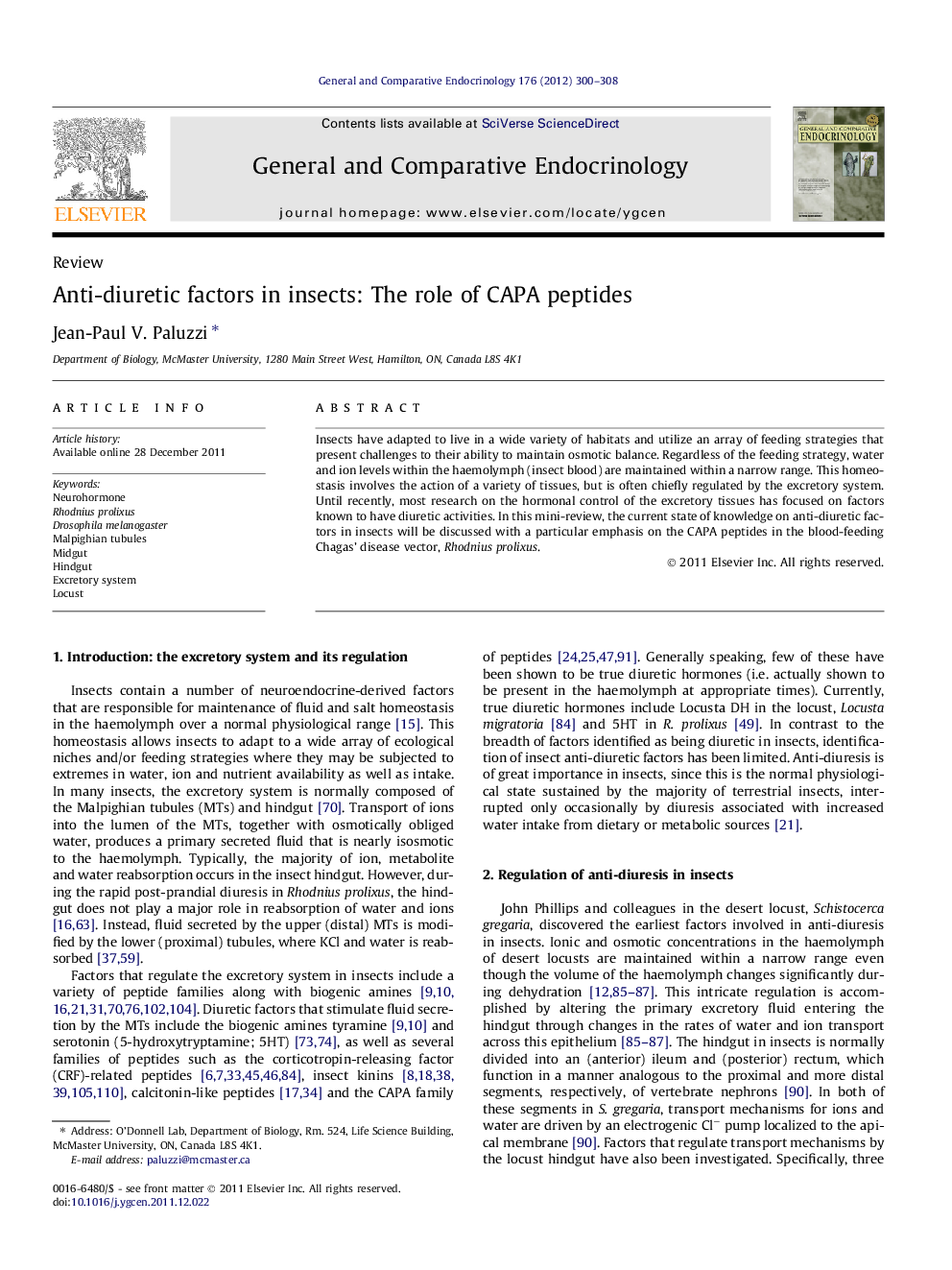| Article ID | Journal | Published Year | Pages | File Type |
|---|---|---|---|---|
| 2800569 | General and Comparative Endocrinology | 2012 | 9 Pages |
Insects have adapted to live in a wide variety of habitats and utilize an array of feeding strategies that present challenges to their ability to maintain osmotic balance. Regardless of the feeding strategy, water and ion levels within the haemolymph (insect blood) are maintained within a narrow range. This homeostasis involves the action of a variety of tissues, but is often chiefly regulated by the excretory system. Until recently, most research on the hormonal control of the excretory tissues has focused on factors known to have diuretic activities. In this mini-review, the current state of knowledge on anti-diuretic factors in insects will be discussed with a particular emphasis on the CAPA peptides in the blood-feeding Chagas’ disease vector, Rhodnius prolixus.
► Knowledge of insect anti-diuretic hormones is limited. ► CAPA peptides regulate fluid secretion by insect Malpighian (renal) tubules. ► Two genes encode CAPA peptides in Rhodnius prolixus. ► CAPA receptor expression in R. prolixus suggests other roles for these peptides.
